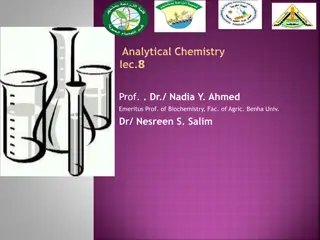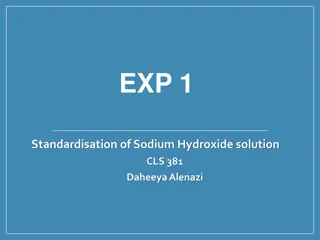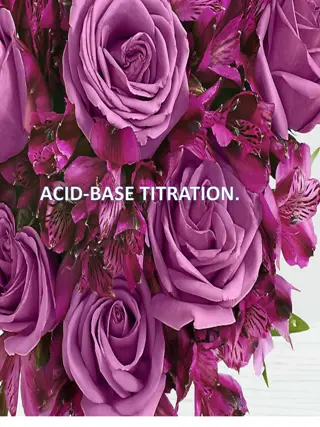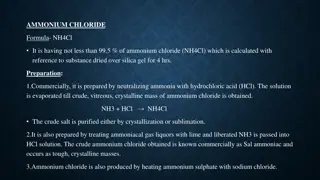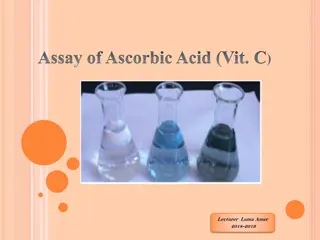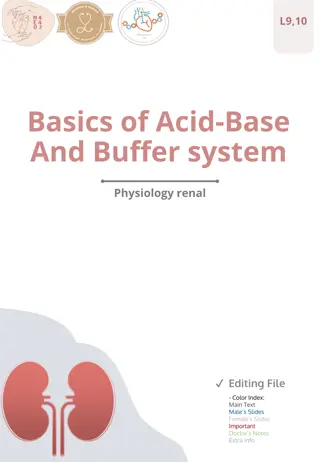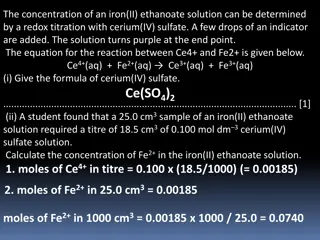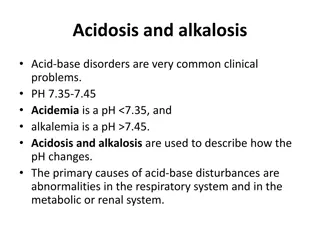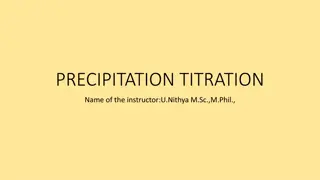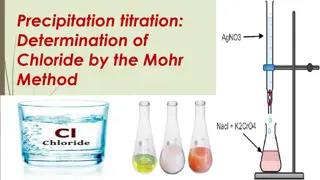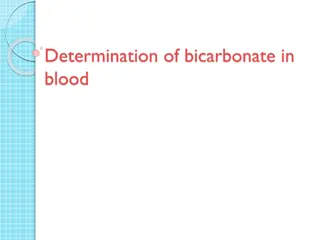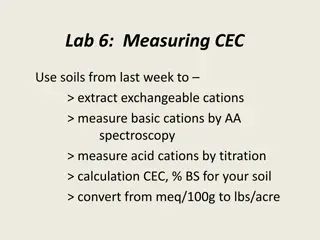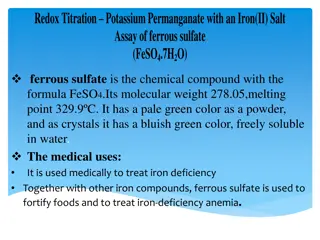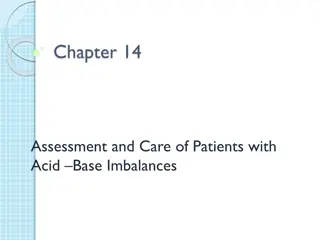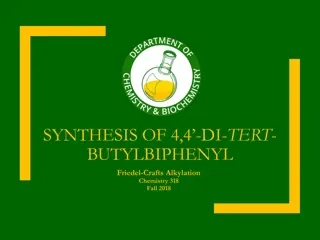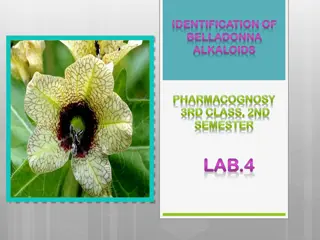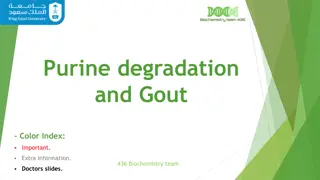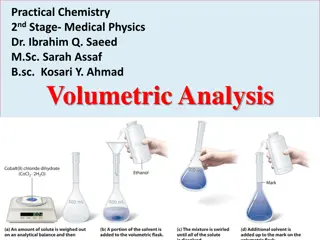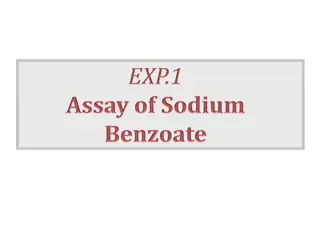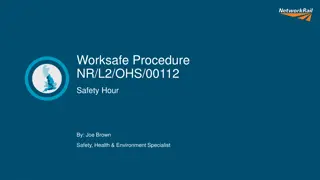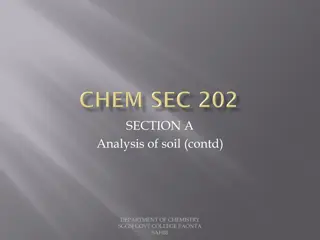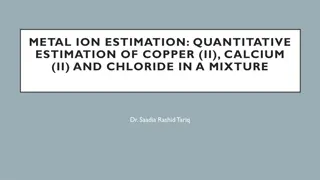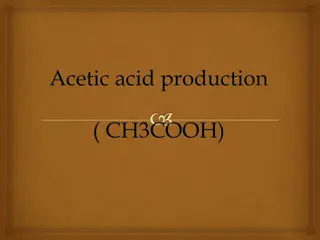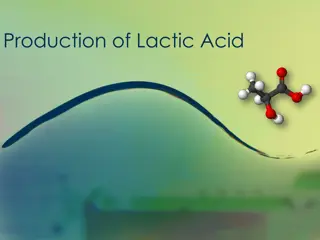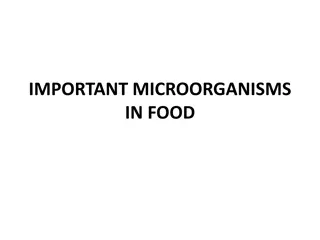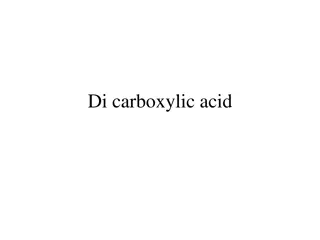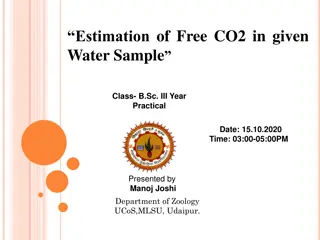Acid-Base Titration Lab Procedure & Calculations
Conduct an acid-base titration experiment to determine the molarity of an unknown NaOH solution using HCl as the titrant. Follow the outlined steps, record data, perform calculations, and analyze the results to understand the principles of this chemical reaction. Learn about indicators, mole ratios, molarity calculations, and error determination in this hands-on lab activity.
Download Presentation

Please find below an Image/Link to download the presentation.
The content on the website is provided AS IS for your information and personal use only. It may not be sold, licensed, or shared on other websites without obtaining consent from the author. Download presentation by click this link. If you encounter any issues during the download, it is possible that the publisher has removed the file from their server.
E N D
Presentation Transcript
Titration the process of determining the molarity of an acid or base by using an acid-base reaction where one reactant is of known molarity.
Get your lab book and copy the lab. Title: Acid/Base Titration Purpose: The purpose of this lab is to practice safe lab technique, to expand our understanding of the acid/base chemical reaction, and to gain experience in the use of indicators. Materials: 250 mL flask 50 mL beaker for 1.0 M HCl (hydrochloric acid) 50 mL beaker to measure water 2 eye droppers water supply phenolphthalein indicator unknown concentration NaOH (sodium hydroxide) solution
Procedure: 1. Place 20 mL of water in a clean 250 mL flask. 2. Place 1 mL of 1.0 M HCl in the flask. 3. Place 5 drops of phenolphthalein indicator in the flask and swirl. 4. Begin adding drops, one at a time of Unknown concentration NaOH to the flask. Be sure and COUNT the number of drops that you add. You will be looking for a COLOR CHANGE. SWIRL THE FLASK EACH TIME YOU ADD A DROP. 5. When the color change is stable, stop adding drops. 6. Perform steps #1 - #5 two more times. 7. Average your results. 8. Calculate the molarity of the unknown. 9. Calculate the percentage error of your results.
Data: Volume of 1.0 M HCl = 1 mL Number of drops of NaOH needed to reach the endpoint =______ Volume of 1.0 M HCl = 1 mL Number of drops of NaOH needed to reach the endpoint =______ Volume of 1.0 M HCl = 1 mL Number of drops of NaOH needed to reach the endpoint =______ Average number of drops = _____________
Calculations: 1. Write the balanced equation for the reaction and determine the mole ratio. NaOH + HCl _______ + _______ 2. Calculate the average number of mL of NaOH needed to reach the endpoint based on 20 drops = 1.0 mL. (circle your answer) 3. Calculate the molarity of the unknown NaOH solution using Ma*Va= Mb*Vb. (circle your answer) 4. Calculate the percentage error of your results using the provided expression. (circle your answer). Tell what you learned during the lab and provide any explanations of what errors may have occurred.
Calculations: 4. Calculate the percentage error of your results using the provided expression. (circle your answer). Accepted Value - Experimental Value % error = x 100 Accepted Value Tell what you learned during the lab and provide any explanations of what errors may have occurred.



